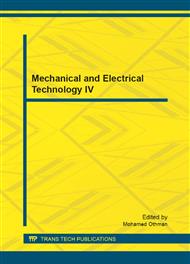p.138
p.142
p.147
p.151
p.155
p.159
p.163
p.167
p.171
Effect of Corrosion Inhibitor TG201 on Electrochemical Corrosion Behavior of Tubular Steel HP13Cr
Abstract:
This paper studies effect of corrosion inhibitor TG201 on electrochemical corrosion behavior of tubular steel HP13Cr by polarization curve test and exchange impedance spectrum method. It analyzes corrosion morphology by SEM. The results show that the increase of compression stress on HP13Cr lead to its self-corrosion potential shifting negatively, then electrochemical corrosion rate increases. Finally, corrosion resistance performance of HP13Cr steel weakens in acidification environment. Effects of compression stress on electrochemical corrosion become weak by adding TG201 inhibitors. And inhibitor efficiency of TG201 has obvious increase. So controlling compression stress has certain influence on inhibitors efficiency.
Info:
Periodical:
Pages:
155-158
Citation:
Online since:
November 2012
Authors:
Keywords:
Price:
Сopyright:
© 2012 Trans Tech Publications Ltd. All Rights Reserved
Share:
Citation:


